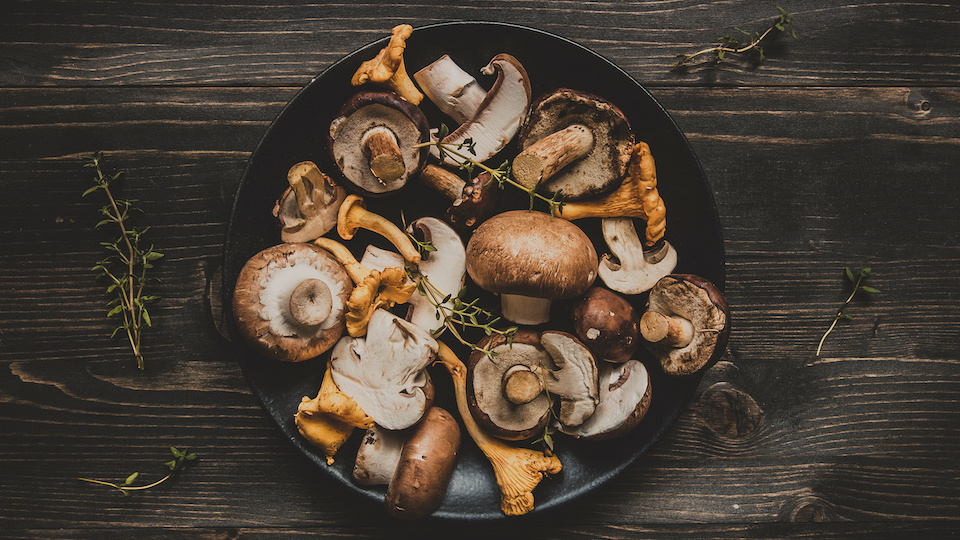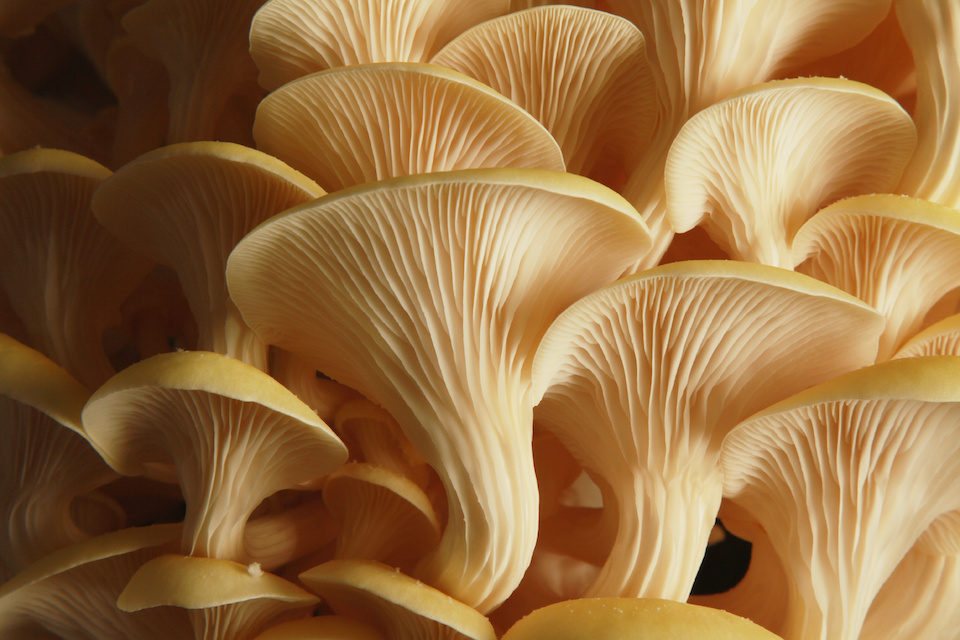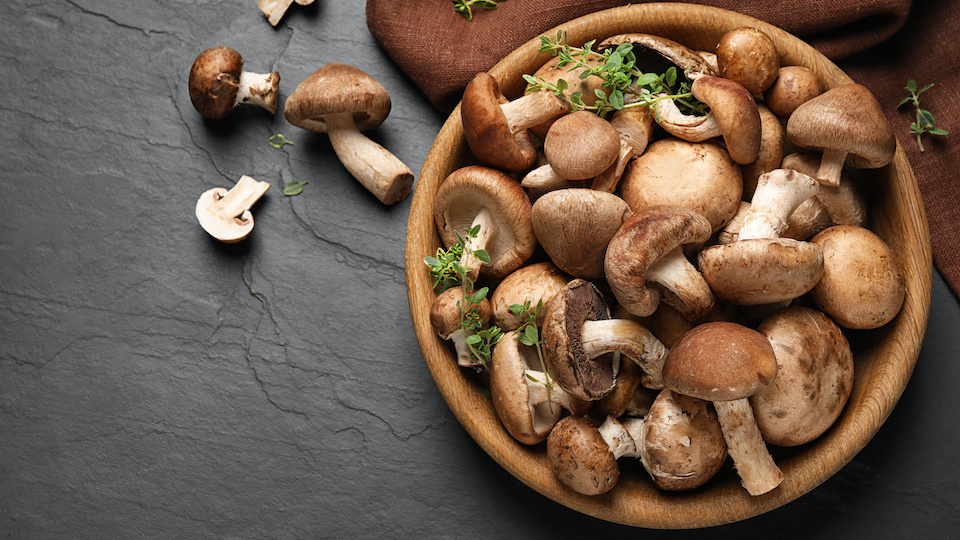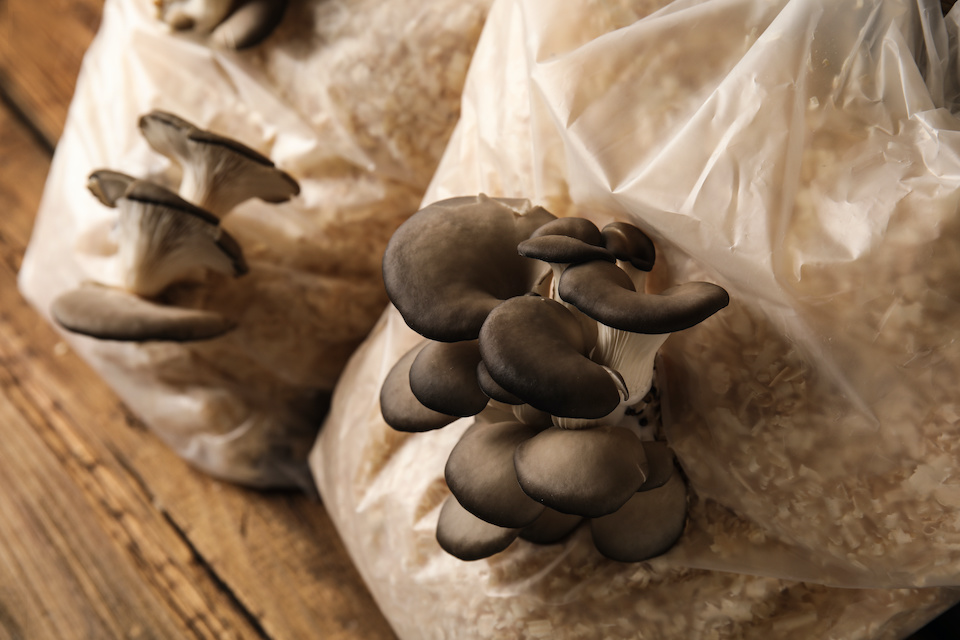Not everyone is thrilled with the idea of eating fungus. However, mushrooms’ nutritional value is second to none, and researchers are learning more each day about their many benefits.
There are over 140,000 mushroom-forming fungi species, yet scientists are only familiar with a mere ten percent of them. But what studies have shown regarding these more well-known varieties is enough to encourage everyone to fill their plate with these healthy fungi.
B Vitamins and Minerals

Mushrooms are an excellent source of B vitamins, essential for various metabolic functions in the body, and are especially vital in nervous system function. They also contain several essential minerals, including selenium, copper, and potassium. Research has shown that including white vegetables such as mushrooms in the diet decreases the risk of nutrient deficiencies, most notably those of fiber, potassium, and magnesium.
Vitamin D

When absorbing important bone-building vitamin D from the sun isn’t an option in colder climates, synthetic forms are often prescribed to ensure sufficient quantities are met. Rather than relying on a lab-formulated vitamin that may lack purity or include fillers or contaminants, you may want to add an extra helping of mushrooms to your plate. Research has shown that mushrooms are capable of providing vitamins D2, D3, and D4.
Weight Loss

Mushrooms are also an excellent addition to the diet for those looking to shed a few pounds. A recent study followed the weight loss and overall health of 73 obese individuals. Those who replaced red meat with mushrooms reported more weight loss, lower body fat percentages, lower blood pressure, and improved health parameters than those who didn’t make the meat substitution. Furthermore, a full year after the trial, the mushroom eaters maintained an average weight loss of seven pounds.
Natural Flavors

Consuming mushrooms will also help decrease sodium in the diet, as they provide the sensory taste of umami, a rich, brothy, and savory flavor. A collaborated report published by the Harvard School of Public Health alongside the Culinary Institute of America suggests that cooking with umami-rich flavors, such as those found in mushrooms, reduces the need for added salt.
Grow your own mushrooms
Good news for mushroom lovers: you don’t have to settle for store-bought. It’s easy to grow your own at home!
What’s the problem with simply going out and buying mushrooms? Well, for starters, they’re one food that is important to buy organic. Mushrooms are incredibly absorbent, and they readily take in whatever nutrients (and toxins) they are grown in. Organic mushrooms are grown without pesticides and chemical fertilizers, but they can be quite expensive, especially for certain varieties such as shiitake.
When you grow your own mushrooms at home, you can control the growth medium and can rest assured that no pesticides or other chemicals end up on your plate. You’ll also gain the satisfaction of eating something that you have grown yourself, with love.
How do mushrooms grow?
Mushrooms grow from spores (not seeds). These spores are so tiny that you can’t see them with your naked eye. Spores get their nourishment, not from soil, like plants, but from substances like sawdust, straw, wood chips, or grain. The combination of spores and nutrients is called spawn. Spawn can grow mushrooms, but for home growers, it is better to apply the spawn to a growing medium such as straw, cardboard, logs, wood chips, etc. From the spawn, tiny white bodies that look like string, called mycelium, begin to form. After this, mushrooms will appear.
How to grow mushrooms in a bucket
On the surface, growing mushrooms can seem quite complicated, but there are many ways that beginners can get started. One of the easiest ways to try your hand at growing mushrooms is to purchase a mushroom growing kit. These kits come with an inoculated mushroom block or log. To make it easy- the only thing you need to do is spritz the block and wait for the mushrooms to grow.
If you are ready to take it a step further, try growing oyster mushrooms ( a very popular variety) in a 5-gallon bucket.
What you need
- 5- gallon bucket with a lid
- Drill and 1/4-inch drill bit
- 5 lbs oyster mushroom grain spawn
- Clean aspen wood chips
- Large clean tote
- Large stockpot
- Gloves
How to do it
- Drill 12 drain holes in the bottom of the bucket.
- Drill 1/4 inch holes every two inches all around the bucket.
- Pour wood chips into a large tote. Cover chips with hot tap water.
- Boil 3 gallons of water and pour this on top of the wood chips.
- Place the lid on the tote and let the wood chips soak overnight.
- Put on gloves.
- Place a thin layer of wood chips on the bottom of the bucket.
- Sprinkle some oyster mushroom spawn on top of the chips. Be sure to break up any large chunks of spawn.
- Repeat this layering process until you reach the top of the bucket, ending with a layer of woodchips. Press each layer of woodchips down before adding spawn.
- Place the lid on the bucket. Place the bucket in the garage or basement to colonize.
- In two to three weeks, the mushrooms should be colonized and ready to fruit.
- Bring the mushroom bucket outside, where it will receive plenty of fresh air. It is essential to maintain humidity in the bucket, so place it in a protected spot – away from the wind – perhaps by a bush or tree for protection. If this is not an option, place a white garbage bag around the bucket.
- Mist the fruiting mushrooms coming out the holes three times daily to maintain humidity.
- With the right conditions, the mushrooms will continue to increase in size over the next several days. Harvest mushroom clusters just before the mushrooms start to tip up (this is before they release spores).
- Use a knife and cut the entire cluster off at the bucket.
- Leave the bucket and wait for another flush of fruit to appear – follow the same instructions as above.
Happy Growing,
-Susan Patterson, CBHC and Master Gardener




